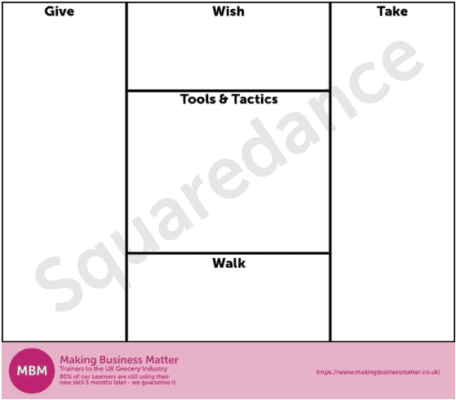You Want to Understand the Process of Negotiation. Not Because You Just Want to Know But Because You Want the Knowledge to Help You Win.
This article will help you to master negotiating by understanding the 4 stages that make up the process of negotiation, and how to win at each stage.
Negotiating is one of the 8 methods of resolving a conflict. And remember that haggling is not negotiating. Negotiation is finding a way to get a better deal. Maybe a win:win, but sometimes it could be a win: lose – You just want that win/lose to be in your favour.
Depending on how extensively you research the topic, there are 4 stages to the process of negotiation, to 8 stages. And everything in between. Let’s keep it simple with 4 stages and mastering those 4 first.
Most ‘negotiations’ are haggling. You start at £100, I start at £50 and we meet at £75. A negotiation, on the other hand, follows the stages of:
- Preparation
- Exploration
- Proposal
- Summarise
The process of negotiation is not hard. It’s only 4 stages. The challenge is firstly knowing the stages, secondly recognising which stage you are in at any time during your negotiation, and thirdly knowing what to do to win at each stage. To keep it memorable we use the mnemonic of Pepsi. Just add an ‘i’.

Let’s take a look at each stage in more detail…
Just before we do, please know that most people who negotiate do so by going straight to the third stage, and missing out on the 3 other stages. They do this because negotiating is conflict and conflict evokes nervousness and a keenness to get it done. This leads to a stalemate, as both parties are proposing and no one is backing down. So, knowing the first two stages and doing them will help you to avoid negotiation stalemates.
Stage 1 of the Process of Negotiation is the Preparation
People that negotiate split into two halves for this stage. Those that do not prepare and ‘wing it’, and those that prepare using Powerpoint. Let’s tackle the first half first with this sentence – the 6 Ps:
Piss Poor Planning Promotes Piss Poor Performance.
As for the second half, Powerpoint is a tool for presenting, not negotiating. You are not presenting a proposal because if you do, you are skipping stage 2 which is exploration. So, if you shouldn’t use Powerpoint and yet you should prepare, what should you use?
The Squaredance

A simple unique and exclusive tool to MBM – The Squaredance. A 1-page template that encourages you to consider:
- Your wish – what do you want to achieve for yourself, from this negotiation?
- Your walk-away – what is the lowest/worst case you will accept before you ‘walk away’?
- Your tradeables – what do you have to give to ‘sweeten’ the deal and what else would you like beyond the obvious of price?
- Your tools – which negotiating tools will you select to help you to achieve the result you want?
In essence, a negotiating tool helps you think about how you will win the negotiation by prompting you with the questions that will help you to win the very best deal.
Master this stage by finding out about the squaredance negotiating tool with this great article on negotiation preparation.
Stage 2: Exploration
I am standing on the forecourt of a car dealership looking at a lovely two-seater red sportscar. Fabulous in every way. My dream car. The salesperson notices me drooling over the car, comes over and starts his patter. ‘Lovely motor. It has only had two owners. Been treated well all her life. You’d look great in this…’ and so it carries on. No exploration. If only he knew that I had 4 kids and that whilst I’d love it, there’s no way on this earth that I can buy it for our family of six. It’s the SUV in the corner that I was on my way to look at.
Negotiation is similar. There is no point in making a proposal (stage 3) unless you know what the other party wants. Exploring is not giving them what they want. Exploring is asking questions so that you can find out what they want, and what’s most important to them. Yes, it will be the price, but what else? Because you can then use this information to identify tradeables and also to construct a proposal that they might listen to.

Master this stage by being a doctor trying to find their pain by asking questions. Open questions work best at this stage because they can’t be answered with a simple yes or no. In my experience of training thousands of people over the last 20 years, most people understand the difference between open and closed questions. Yet, in practice, they rarely use open ones.
Stage 3 of the Process of Negotiation is the Proposal
In this stage, you are making proposals and ideally using the most taught negotiation tool in the world – The ‘If You, Then I…’ tool. Constructing proposals that get you what you want and give them some of what they want.
A little like passing a pizza back and forth. The base is the price. The base changes from light & crispy to a deep pan, whilst the toppings change too, representing the tradeables. Each party passes the pizza back and forth offering a deep & crispy pan (High price), but also adding pepperoni, and extra mozzarella. You consider it, ask a few more questions (Briefly going back to the exploration stage), and then send the pizza back. Now a deep & crispy 9″, rather than 12″ with spicy pepperoni, and less mozzarella.
Negotiating differs from haggling because haggling is on one dimension, usually price. Negotiation is on several dimensions; price, time, colour, shape, quality, etc. This is why negotiation is considered a skill, and haggling not so much.

Mastering this stage is about using the ‘If you then I tool’ effectively. Just through practice. A little like tuning in the dial of an old radio. You’ll hear the music sometimes, meaning the tool will work for you, and at other times, you’ll just hear static, which is when it doesn’t work. Keep tuning to find the music.
Stage 4: Summary
The fourth stage is skipped by everyone too. What they find happens, is they negotiate, fight hard for what they deserve and agree on the deal, only to find out that when they send the email or the paperwork, the other party understood their agreement differently. And so the negotiation starts all over again from square 1. What a shame, and now with added frustration as each party blames the other for wasting their time.
Summarising what you’ve agreed doesn’t just have to happen in stage 4. You might summarise the problems/challenges in the exploration stage. For example, ‘If I understand you, what you need is £9.42 per case, 5,000 cases, in blue and on Tuesday. Is this correct?’. Then, in the proposal stage with ‘So, I think you are offering £111,250 for 3 promotions starting in February, supported by 2 magazine full-page adverts. Is this correct?’.
Summarising in the summary stage is about finalising what we all believe has been agreed as the final deal. This is to ensure that you all have the same understanding of what has been agreed upon before you walk away.
Mastery at this stage is about making sure that you have taken sufficient notes throughout the negotiation so that a credible summary can be made. Don’t be tempted to slip-in something that has not been agreed upon because you will lose credibility.
Making the Learning Stick
Use the mnemonic of PEPS; Preparation, Exploration, Proposal and Summary. PEPS will help you to remember the 4 stages so that you can recognise which stage you are in at any time during your negotiation.
Action: For even more useful content on negotiations, check out our ultimate guide on negotiation skills.




